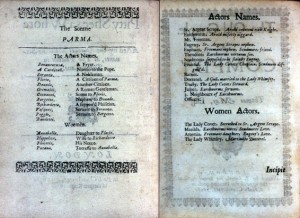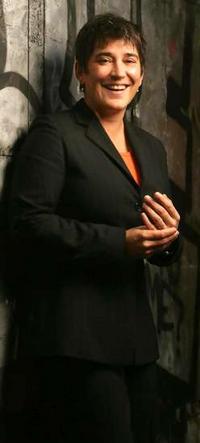 Reading up on the 17th century play, ‘Tis Pity She’s a Whore, I broke into a sweat. The work is about incest, tough stuff. Cheek by Jowl Theater, the celebrated troupe of British actors, brings playwright John Ford’s tragic drama about carnal knowledge between a brother and sister to UCLA’s Freud Playhouse for a five-performance run.
Reading up on the 17th century play, ‘Tis Pity She’s a Whore, I broke into a sweat. The work is about incest, tough stuff. Cheek by Jowl Theater, the celebrated troupe of British actors, brings playwright John Ford’s tragic drama about carnal knowledge between a brother and sister to UCLA’s Freud Playhouse for a five-performance run.
Published in 1633 and then surviving to our era ranks ‘Tis Pity as a curiosity. It’s “just” a literary work, a bunch of paper, a cheap commodity … so easy to dismiss, denigrate, censor, trample on, or vanquish through generations. Beyond the work’s mere survival, making its presence in Westwood even more miraculous is the play’s challenging content. Ford’s dense weave of poetry and passion gets blood-drenched treatment in Cheek by Jowl’s modern-dress version as directed by Declan Donnellan and designed by Nick Ormerod.
 This compelling 380-year-old work of art counts among its champions Kristy Edmunds, now in her first full season as artistic director of the Center for the Art of Performance at UCLA. We chatted recently about ‘Tis Pity.
This compelling 380-year-old work of art counts among its champions Kristy Edmunds, now in her first full season as artistic director of the Center for the Art of Performance at UCLA. We chatted recently about ‘Tis Pity.
“To take a multi-centuries-old text and put it before an audience as a viable part of contemporary theater language, this is significant,” says Edmunds.
“Upsetting content aside, there’s something amazing about this show that it’s still considered part of classical English literature. It’s had a pretty interesting path of having been removed and put back in different eras for different sets of reasons.”
The British thespians bring an outstanding reputation to the project. Why produce this particular play?
“Cheek by Jowl [represents] one of the most relevant theater companies of our time,” notes Edmunds. “They have stuck their theatrical laurels on revitalizing and revisiting classical theater. They are a great troupe that excavates literature and the English language. The play occupies an aesthetic terrain that switches on any great artist.”
 It sounds like a tough night out for audiences most recently dragged across the fiscal cliff not to mention our own society’s struggle with violence and moral decay.
It sounds like a tough night out for audiences most recently dragged across the fiscal cliff not to mention our own society’s struggle with violence and moral decay.
But according to Edmunds, the audience will be rewarded by “a tour de force of acting.”
“Getting at a piece that is part of the literary canon through the eyes of these particular actors is a tremendous experience.”
Edmunds readily admits the subject is not easy: “The play’s position in relation to the incest hinges on ambiguity. There are questions raised in the text: Are they [sister Annabella and brother Giovanni] innocent? Are they victims of a kind of mercantile order? Are they the product of this system? Can society feel sympathy for their condition? How responsible are they for themselves?”
Edmunds’ words strike close to home. I’ve been wondering the very same things about the man who shot 20 kindergarten children.
In general, says Edmunds, “it’s impossible to find easy answers about where guilt gets laid, and who is free from blame.
“Some people find it most effective to avoid difficult content, others find it bestirring. It causes us to look at the world in a different way, however shaken that awareness may leave us,” says Edmunds, her voice taking a fervent tone. “But that which provokes us to feel awake in the world is the job of art.”
‘Tis Pity She’s A Whore | UCLA Freud Playhouse | opens Jan 9, five shows
